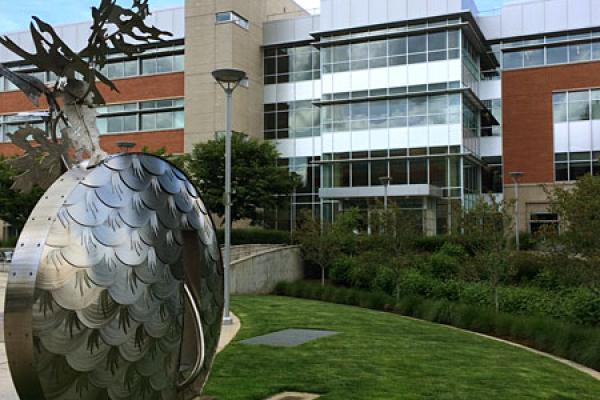The goal of the Walk Bike Clackamas Plan is to create a comprehensive, long-term vision to improve opportunities for people walking and biking as they travel in the county.
Review the draft Walk Bike Plan Adoption Materials
What will the plan do?
The plan will:
- Establish infrastructure priorities, such as where to build new bike lanes and sidewalks, which will help the county apply for future grants and other funding opportunities.
- Identify programs that increase safety and convenience of walking and biking (like Safe Routes to School).
- Update active transportation polices and adopt performance measures so we can track progress during implementation
- Serve as the pedestrian and bicycle transportation elements of the county’s updated Transportation System Plan (TSP)
Project area
The project applies to all urban and rural unincorporated areas of Clackamas County, and will coordinate with cities in the county.
Key Terms and Definitions
The following key terms are central to understanding Walk Bike Clackamas:
- Active transportation: human-powered modes of travel, including walking, rolling a wheelchair, and riding a bicycle.
- Facilities and infrastructure: designated places for people to walk, roll, and ride a bike, such as off-street shared-use trails, painted bike lanes on streets, marked and signalized crosswalks, and sidewalks and multiuse paths.
- Equity: reducing or eliminating disparities by thoughtfully spreading resources to overcome the unique barriers different groups face.
- Health equity: providing fair access to opportunities and resources for people to achieve physical and social health and well-being, and reducing barriers caused by circumstances outside of a person’s control, such as race, ethnicity, or social background.
- Communities of interest: groups of people who have experienced or continue to experience inequitable access to resources in society. Walk Bike Clackamas is focusing on achieving equitable outcomes for the following communities of interest:
- Black people, Indigenous people, and People of Color (BIPOC)
- Immigrants
- People with limited English proficiency
- Low-income and low-wealth community members
- Low- and moderate-income renters and homeowners
- People with disabilities
- Youth and seniors
Walk Bike Advisory Committee (WBAC)
Community members and technical experts will review project work and advise the project team. Meetings are open to the public and include time for public comment.
WBAC Members
| Name | Organization/Area/Expertise |
|---|---|
| Jacob Anderson | Social/Environmental Justice |
| Dean Apostol | Rural Interests |
| Mark Bentz | Climate Action |
| Allina Cannady | Public Health |
| Mike Cardwell | Bicyclists |
| Joseph Edge | Pedestrian/Bikeway Advisory Committee |
| Josh Fisher | Mobility Needs |
| Kevin Haro | Diversity |
| Sandra Henderson | Pedestrians |
| Kymberly Kalu | Bike commuting/e-bikes |
| Aaron Lierseman | Tourism |
| Natasha Muro | Transit |
| Jay Panagos | Bicyclist/Safety |
| Nicole Perry | Safe Routes to School |
| Rob Sadowsky | Vision Zero |
| Christian Snuffin | Traffic engineering |
| Tonia Williamsom | Trails |
| Marika Yumang | Health |
| Staff | |
| Scott Hoelscher | Project Manager |
| Brett Setterfield | Transportation Planner |
| Ellen Rogalin | Community Involvement |
Why do we need a new plan?
- Things have changed
Since the last update in 2003, our transportation system has drastically changed. Projects have been built and policy priorities are different. - Oregon law
State requires counties to develop balanced transportation systems and regularly update their bicycle and pedestrian plans. - Climate goals
The Board of County Commissioners has set a goal for the county to be carbon neutral by 2050, which means balancing our greenhouse gas emissions to capture as much as we emit. Updating our Pedestrian and Bicycle Master Plan will help reach this goal. - New mobility options
Planning for opportunities like bike share, e-bikes, cargo bikes and other advancements were not included in the last plan. To increase accessibility and safety in Clackamas County, emerging technologies could be integrated into our multi-modal transportation system.
Related webpages
Documents
- Fact Sheet
- Public Involvement Plan
- Title VI Equity Assessment Memorandum
- Technical Memorandum 1: Health Equity Framework
- Technical Memorandum 2: Baseline Health Conditions
- Technical Memorandum 3: Plan Review
- Technical Memorandum 4: Existing Conditions Analysis
- Technical Memorandum 5: Pedestrian and Bicycle Goals
- Technical Memorandum 6: Supportive Programs
- Technical Memorandum 7: Shared Streets
- Technical Memorandum 8: Gaps and Deficiencies Analysis
- Technical Memorandum 9: Project Prioritization Methodology
- Technical Memorandum 10: Pedestrian and Bicycle Project Identification
- Technical Memorandum 11: Pedestrian and Bicycle Priority Project Recommendations
- Cost Estimate Methodology
- Funding and Implementation Strategy (December 2023)
- Engagement #1 Summary (Winter 2023)
- Engagement #2 Summary (Spring 2023)
- Engagement #3 Summary (Summer 2023)
- Engagement #4 Summary (April 2024)
 Translate
Translate








